Transform Your Home into a Cozy Winter Retreat While Cutting Heating Costs
As winter's chill sets in and a blanket of frost envelops the landscape, the need for warmth and comfort in your home intensifies. Yet, the rising costs of heating can put a strain on your budget, making it essential to find affordable solutions. Fortunately, a variety of energy-efficient strategies exist that can help you create a welcoming winter sanctuary without overspending. In this comprehensive guide, you will uncover practical and actionable tips, along with proven techniques, to maintain a warm living space while keeping your energy bills manageable during the cold months ahead.

Enhance Your Home’s Energy Efficiency by Identifying and Sealing Air Leaks
A significant amount of heat loss in homes is attributed to unnoticed air leaks. By actively seeking out and sealing these leaks, you can substantially improve your home’s energy efficiency, leading to lower heating expenses. This detailed guide will provide you with effective strategies for locating and sealing air leaks around vents, windows, and doors, ensuring a cozy atmosphere in your home:
- Windows:
- Inspect for Drafts: On blustery days, take the time to thoroughly inspect the edges of your windows for any drafts. Using a candle or incense stick can aid in detecting subtle air movements that indicate leaks, helping you locate specific areas that need attention.
- Apply Weatherstripping: Implement weatherstripping materials—such as adhesive-backed foam or V-strip—to create a tight seal around window frames. Selecting the appropriate type of weatherstripping based on your window design is crucial for effective insulation and maximizing energy savings.
- Doors:
- Check for Gaps: Carefully examine the edges of your doors for any visible gaps that may allow cold air to enter your home. A well-lit room during nighttime can assist in revealing leaks through these openings, making them easier to identify and seal.
- Install Door Sweeps and Weatherstripping: Utilize door sweeps at the bottom of doors to effectively block drafts and apply self-adhesive weatherstrips along the sides to seal any gaps that may compromise your home’s energy efficiency.
- Vents and Ducts:
- Seal Ductwork: Ensure that your ductwork is sealed properly to prevent warm air from escaping into unconditioned spaces. Using a mastic sealer or foil tape can effectively secure loose connections, thereby enhancing the overall performance of your heating system.
- Install Vent Covers: Magnetic or adhesive vent covers can effectively control airflow, minimizing drafts in less frequently occupied rooms while maintaining comfort in the rest of your home.
- Caulking and Sealant:
- Inspect Exterior Walls: Carefully check the outer walls of your home for any cracks or holes. Applying caulk or sealant to fill these gaps will help prevent air and moisture intrusion, significantly contributing to improved energy efficiency.
- Select the Right Sealant: Choosing the appropriate sealant based on the location and material is crucial. Silicone is ideal for flexible joints, while acrylic caulk works best for indoor applications.
- Utilize Draft Stoppers:
- Place Along Door Bottoms: Use draft stoppers, commonly known as door snakes, to block cold air from entering through the bottom of doors. These fabric tubes can be easily positioned or removed as needed, providing an immediate solution to chilly drafts.
- Seek Professional Assistance:
- Consider Energy Audits: Hiring a professional to conduct an energy audit can be incredibly beneficial. Experts utilize advanced tools, such as thermal imaging cameras, to identify hidden leaks and suggest tailored solutions specific to your home.
Regular inspections and prompt repairs of discovered air leaks not only enhance your home’s overall comfort but also significantly boost energy efficiency. By taking a proactive approach to sealing these gaps, you can effectively lower your energy bills while fostering a more welcoming living environment throughout the winter months.
Harness Natural Sunlight to Elevate Warmth and Ambiance in Your Home
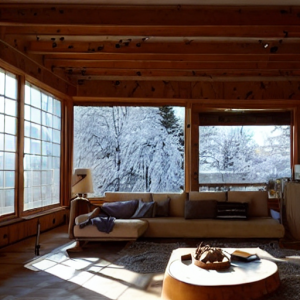 Utilizing natural sunlight during the winter months can greatly enhance both the warmth and ambiance of your home environment. Here’s an in-depth exploration of effective strategies to harness daylight to your advantage:
Utilizing natural sunlight during the winter months can greatly enhance both the warmth and ambiance of your home environment. Here’s an in-depth exploration of effective strategies to harness daylight to your advantage:
- Daylight Utilization Strategies:
- Strategic Curtain Management: Keep curtains and blinds open during daylight hours to allow natural sunlight to flood your living areas. Position them to fully expose windows, enabling sunshine to penetrate deeper into your rooms, maximizing warmth and brightness.
- Choose Sheer Fabrics: If privacy is a concern, consider using sheer curtains that permit sunlight to filter in while still maintaining some level of seclusion. The diffusion of light through sheer materials creates a warm and inviting atmosphere, enhancing the overall feel of your home.
- Solar Heat Gain:
- Understanding Solar Heat: Sunlight entering your home contributes to solar heat gain, particularly through south-facing windows that receive more sunlight during winter. This can be advantageous for warming your space without incurring extra heating costs.
- Utilize South-Facing Windows: Prioritize opening curtains and blinds on south-facing windows to maximize sunlight exposure, especially in chillier climates where every ray of sunshine counts.
- Nighttime Heat Retention:
- Close Curtains at Night: As temperatures drop in the evening, drawing your drapes and blinds helps insulate your home, preserving warmth accumulated throughout the day. Opt for heavier drapes or those with thermal lining for improved insulation.
- Invest in Insulated Window Treatments: Consider adding insulated drapes or shades to further minimize heat loss, effectively creating an additional barrier against cold air entering your living space.
- Ambiance and Well-Being:
- Enhance Indoor Lighting: Natural sunlight not only warms your home but also improves the quality of indoor lighting, reducing reliance on artificial lighting during daylight hours. This can lower energy consumption and positively impact your electricity bills.
- Incorporate Biophilic Design: Exposure to natural light has been linked to improved well-being. Allowing sunlight into your living areas can positively influence your mood and productivity levels, creating a more enjoyable home atmosphere.
- Window Maintenance:
- Clean Windows Regularly: Ensure that windows are cleaned frequently to maximize sunlight entry. Regularly removing dust and debris from both the interior and exterior prevents obstructions that can limit natural light and warmth.
- Smart Home Technology:
- Consider Automated Window Treatments: Think about installing smart window treatments that can automatically open and close based on predetermined schedules, optimizing sunlight exposure and heat retention without the need for manual adjustments.
By incorporating these tactics into your winter routine, you can fully leverage the benefits of natural sunlight, creating a warm and inviting ambiance in your home while simultaneously enhancing energy efficiency. By optimizing your window treatments and understanding solar heat gain, you can significantly improve comfort and atmosphere during the colder months.
Achieve Superior Energy Efficiency with Effective Insulation Techniques
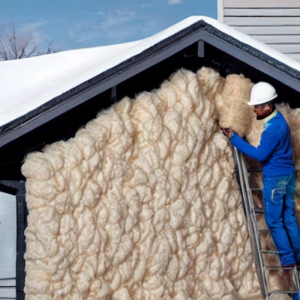 Proper insulation is vital for minimizing heat loss and enhancing the overall energy efficiency of your home. Developing a comprehensive insulation plan that focuses on key areas, such as the attic, walls, and basement, will lead to a warmer and more cost-effective living environment during the frigid winter months.
Proper insulation is vital for minimizing heat loss and enhancing the overall energy efficiency of your home. Developing a comprehensive insulation plan that focuses on key areas, such as the attic, walls, and basement, will lead to a warmer and more cost-effective living environment during the frigid winter months.
Start your energy efficiency journey by evaluating the insulation levels in your attic. Sufficient insulation in this area prevents heat from escaping through the roof and serves as a crucial barrier against cold air. Various insulation materials, including fiberglass, cellulose, and foam board, offer differing levels of effectiveness. Consulting with a professional can assist in determining the most suitable insulation type and thickness for your attic, ensuring optimal performance and effectiveness.
Next, ensure that your walls are well-insulated to create a continuous thermal envelope around your home. Adequate wall insulation helps regulate indoor temperatures by preventing heat from escaping through exterior surfaces. Insulation in exterior walls acts as a buffer against outdoor temperature fluctuations, making this a priority for enhancing energy efficiency and overall comfort.
When insulating your basement, focus on both the walls and ceiling if applicable. Uninsulated basements, which are typically in close contact with the ground, can be a significant source of heat loss. Employ materials like rigid foam boards or spray foam insulation to effectively insulate basement walls. If the basement ceiling remains unfinished, insulating it creates a thermal barrier between the basement and the living areas above, further enhancing energy efficiency and comfort.
When selecting insulation materials, consider the R-value, which measures heat resistance. Higher R-values indicate better insulation performance. However, the ideal R-value may vary based on factors such as climate, local building codes, and specific application areas, so it's important to conduct thorough research accordingly.
In addition to adequate insulation, ensure that your home is properly sealed to prevent air leaks that can compromise insulation effectiveness. Avoid allowing conditioned air to escape through gaps around windows, doors, and other potential openings to maintain a comfortable home environment.
Investing in high-quality insulation not only helps retain warmth but also leads to substantial savings on heating bills over time. The initial investment in insulation pays dividends by reducing the need for constant heating and enhancing energy efficiency across your home.
For a comprehensive evaluation, consider consulting insulation professionals or energy auditors. They can provide tailored recommendations based on your home’s unique characteristics, ensuring that your insulation strategy aligns with both your energy-efficiency goals and the specific requirements of your living space.
Enhance Home Comfort with a Programmable Thermostat for Optimal Energy Management
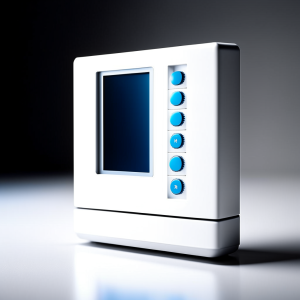 Investing in a programmable thermostat is a proactive measure to optimize your home’s energy consumption while enhancing overall comfort. This intelligent device allows for flexible and automated temperature control, significantly improving your comfort levels and saving you money on energy costs.
Investing in a programmable thermostat is a proactive measure to optimize your home’s energy consumption while enhancing overall comfort. This intelligent device allows for flexible and automated temperature control, significantly improving your comfort levels and saving you money on energy costs.
Automated Temperature Adjustments: One of the standout benefits of a programmable thermostat is its ability to seamlessly adapt to your daily schedule. By pre-setting temperature adjustments based on your routine, you can ensure that your home is efficiently heated when needed, avoiding unnecessary energy waste during times when you are away or sleeping.
Energy Savings through Setback Settings: Programmable thermostats facilitate the implementation of setback settings during periods when you are away or asleep. Lowering the temperature during these times helps prevent your heating system from overworking. According to the U.S. Department of Energy, reducing the temperature by just one degree can result in savings of up to three percent on home heating costs, which can accumulate significantly over time.
Tailored Comfort Levels: These devices allow you to customize temperature settings according to your personal preferences. You can program the thermostat to warm your home just before you return, ensuring a comfortable environment upon your arrival. This tailored approach enhances both energy efficiency and your overall satisfaction with your home’s climate.
Optimizing Heating Cycles: With a programmable thermostat, you can achieve more efficient heating cycles. The system operates with greater precision, reducing energy waste while maintaining consistent temperatures during times when your home is occupied and adjusting appropriately when it is unoccupied.
Smart Thermostats and Connectivity: The advancement of technology has introduced smart thermostats, which feature advanced capabilities such as remote management via smartphone apps and integration with home automation systems. These functionalities offer unparalleled control and energy management capabilities, allowing you to monitor and adjust your home’s temperature even when you’re away.
Installation and Compatibility: Installing a programmable thermostat is generally a straightforward process, with many models being compatible with existing heating systems. However, it is essential to choose a thermostat that fits your HVAC system and meets your home’s specific needs to maximize effectiveness and efficiency.
Considerations for Usage: While programmable thermostats are highly effective, careful programming is essential to maximize their benefits. Understanding your daily schedule and adjusting the settings accordingly ensures that the thermostat operates in harmony with your lifestyle, enhancing energy savings while maintaining comfort.
Achieve Maximum Comfort with Layering Techniques for Winter Warmth
 To elevate your comfort during winter, consider the straightforward yet effective approach of personal layering before resorting to adjusting the thermostat. This strategy not only helps to reduce energy costs but also creates a more pleasant indoor environment, empowering you with greater control over your comfort levels.
To elevate your comfort during winter, consider the straightforward yet effective approach of personal layering before resorting to adjusting the thermostat. This strategy not only helps to reduce energy costs but also creates a more pleasant indoor environment, empowering you with greater control over your comfort levels.
Clothing as Insulation: Think of your clothing as an additional layer of insulation for your body. By wearing cozy sweaters, thermal socks, and comfortable slippers, you create a barrier against the cold, allowing for warmth without solely relying on heating systems. Opt for materials like wool and fleece, which are known for their excellent insulating properties, to ensure you remain warm and comfortable.
Footwear Matters: Cold feet can significantly diminish your comfort indoors. Investing in insulated slippers or warm socks is essential to keep your feet cozy. This simple change not only enhances warmth but also reduces the need to raise the thermostat temperature to compensate for chilly extremities, contributing to overall energy savings.
Layering for Bedtime Comfort: Extend the concept of layering to your bedding. Instead of immediately cranking up the thermostat at bedtime, use extra blankets to create layers on your bed. Combining lightweight and heavier blankets allows you to customize the layers to your comfort needs, creating a warm cocoon for sleeping that helps retain body heat while you rest.
Understanding the Science of Layering: Layering is a time-tested technique that focuses on conserving and capturing body heat. Each layer traps warm air, enhancing overall insulation. By mimicking the natural way our bodies regulate temperature, you can maintain comfort with less reliance on artificial heating, resulting in a more sustainable approach to winter warmth.
Benefits Beyond Energy Savings: Mastering layering offers advantages that extend beyond energy conservation. It promotes an eco-friendly lifestyle by minimizing the carbon footprint associated with higher heating needs. Additionally, layering creates a sense of coziness and control over your environment, allowing for personalized warmth that enhances your overall comfort.
Seasonal Wardrobe Transition: As winter approaches, consider incorporating additional insulating items into your wardrobe. Look for thicker fabrics, thermal undergarments, and accessories like scarves and gloves. By adapting your clothing to the changing seasons, you’ll be better prepared for a winter that is both comfortable and energy-efficient.
Mindful Thermostat Adjustments: Incorporating layering into your routine allows you to make thermostat adjustments more mindfully. Even minor changes, such as lowering the temperature by a few degrees, become achievable when paired with the added warmth offered by layered clothing and bedding, leading to greater energy savings.
Ensure Optimal Performance with Routine Heating System Maintenance
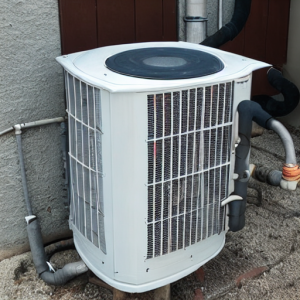 A well-maintained heating system is essential for achieving a comfortable indoor temperature throughout winter while minimizing energy expenses. Prioritizing regular maintenance and professional servicing ensures your heating system operates at peak efficiency, providing consistent and reliable warmth when you need it the most.
A well-maintained heating system is essential for achieving a comfortable indoor temperature throughout winter while minimizing energy expenses. Prioritizing regular maintenance and professional servicing ensures your heating system operates at peak efficiency, providing consistent and reliable warmth when you need it the most.
Furnace Filter Maintenance: Start by closely monitoring your furnace filters. These filters play a crucial role in maintaining optimal airflow, which is vital for efficiency. Clean or replace filters regularly to prevent dust and debris buildup. Clogged filters restrict airflow, forcing the system to work harder and consume more energy, ultimately leading to higher heating costs.
The Role of Airflow in Efficiency: Understanding the connection between airflow and heating efficiency is critical. Unrestricted airflow allows the system to distribute heat evenly throughout your home, reducing the workload on the furnace. This leads to improved comfort and decreased energy usage, thereby enhancing the overall efficiency of your heating system.
Professional Inspection and Servicing: Do not underestimate the importance of professional assistance for your heating system. Schedule a comprehensive inspection and servicing before winter sets in. Certified technicians can identify and address potential issues that may compromise system efficiency, ensuring you stay warm and comfortable during the colder months.
Preventive Maintenance Benefits: Investing in preventive maintenance pays off in the long run. It enables early detection and resolution of issues while extending the lifespan of your heating system. Routine inspections ensure all components are functioning correctly, enhancing productivity and reducing the risk of unexpected breakdowns that could leave you in the cold.
Efficiency Upgrades: Consider upgrading your heating system for improved efficiency. Newer models often come equipped with advanced features designed to maximize energy efficiency. While the initial investment may seem significant, the long-term savings on energy bills and potential rebates make this a wise financial choice.
The Article Energy Hacks for a Budget-Friendly Cozy Winter Home Was Found On https://limitsofstrategy.com
The Article Budget-Friendly Energy Hacks for a Cozy Winter Home First Appeared ON
: https://ad4sc.com

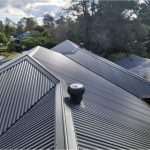
This post raises important points about the dual challenge of maintaining warmth in our homes while keeping costs down during winter. I particularly appreciate the emphasis on identifying and sealing air leaks; it’s often an overlooked step in energy efficiency.
I really appreciate this guide on transforming our homes into cozy winter retreats while being mindful of heating costs. It’s so easy to overlook those pesky air leaks; I remember when I first moved into my house, I was shocked at how much cold air was seeping in around the windows and doors. A simple weekend of weatherproofing made a noticeable difference in both comfort and my heating bill.
This post resonates with me deeply, especially as I prepare my home for the winter months ahead. I’ve always found joy in creating a cozy atmosphere when the temperature drops. Sealing air leaks has made a noticeable difference in my living space; it’s not just about saving on bills, but about transforming the home into a haven of warmth and comfort.